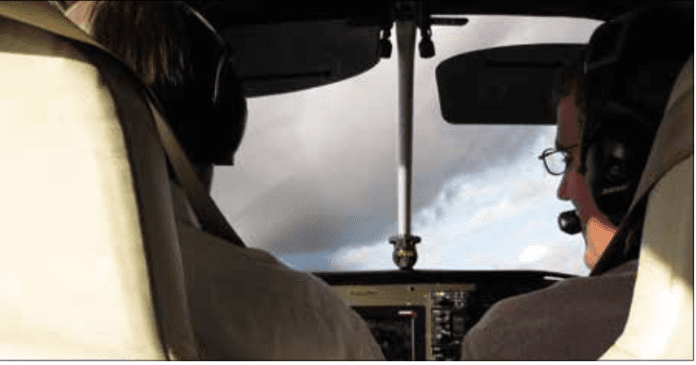I was a new private pilot with about 100 hours, training for my instrument rating. A schoolmate asked if I wanted to go as a passenger to a very busy international airport to pick up a friend. He was supposedly well-trained with more hours than me, but did not feel comfortable flying into a busy airport. Having trained at a busy airport, I was comfortable and used to flying in that airspace.
It was agreed that I was just a passenger unless needed for the short flight. Immediately after takeoff, I felt things were not right. He looked and flew with uncertainty, and his communication skills were sloppy.
Everything went bad when ATC gave us vectors and a hold for sequencing. The left-seater locked up and did not respond to ATC. We were flying the wrong direction and not holding altitude. Soon, ATC was almost frantic.
I told him to fly the airplane and I would talk to ATC. The controller knew there was a problem and I assured them we would comply. Then, I told the left-seater the headings and altitudes. He was soaked in sweat and white as a ghost.
He did not respond and would not let go of the controls. I said, “My airplane,” and tried to fly from the right seat—it was a battle. I decided I had to take control to save myself and anyone on the ground. I was able to pry his fingers off the yoke and bent them backwards until he snapped out of his fear and felt the pain. I finally had control of the airplane, complied with ATC and was able to land safely.
The lessons are plentiful. First, my flight instructor had warned me about situations where people took the controls or froze and then crashed the plane, and to never let anyone take over my plane. This was long before 9/11 and I thought it was a joke. Second, I had never flown from the right seat. Third, I almost waited too long in the hope that talking to him would fix the situation.
Finally, fly from the right seat occasionally, pay attention to every aspect of the flight and trust your gut—it’s usually spot-on.
Have you encountered a situation or hazardous condition that yielded lessons on how to better manage the risks involved in flying? Do you have an experience to share with Aviation Safety’s readers about an occasion that taught you something significant about ways to conduct safer flight operations? If so, we want to hear about it.
We encourage you to submit a brief (500 words) write-up of your Learning Experience to Aviation Safety for possible publication. Each month, Aviation Safety publishes a collection of similar experiences sent to us by readers. Sharing with others the benefit of your experience and the lessons you learned can be an invaluable aid to other pilots.
You can send your account directly to the editor by e-mailing it to [email protected]. Put “Learning Experience Submission” in the subject line; add your name and daytime telephone number at the bottom of the e-mail.
Your report will be considered for publication in the Aviation Safety’s readers’ forum, “Learning Experiences,” and may be edited for style and length. Anonymity is guaranteed if you want it. No one but Aviation Safety’s editor is permitted access to the reports. Your name and telephone number are requested only so that the editor can contact you, if necessary.
While we can’t guarantee your submission will get published, we can guarantee that we’ll closely review and consider using it.
All Learning Experiences submissions become the property of Aviation Safety and may be republished.




